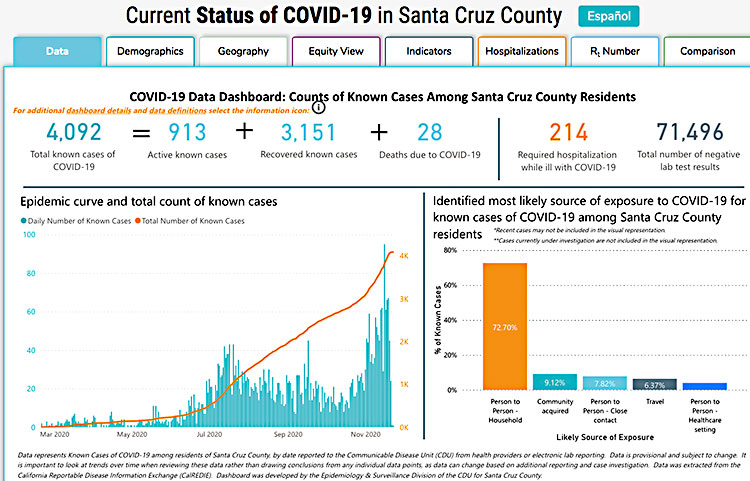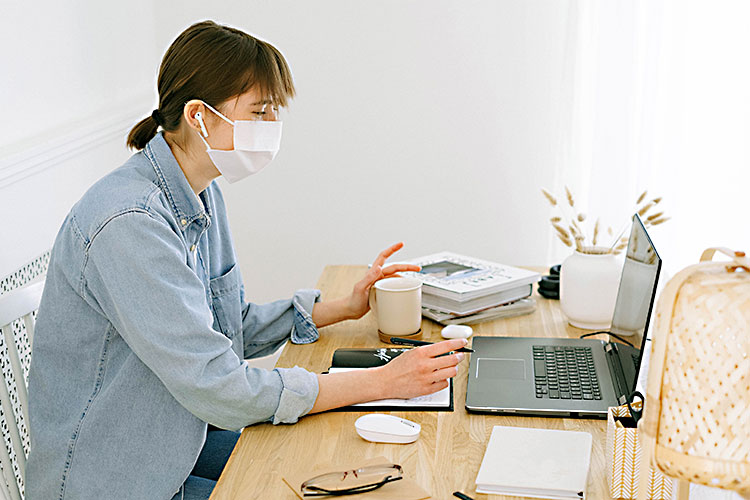What is AB 685?
 AB 685 is a California law signed by Gov. Gavin Newsom on Sept. 17, 2020. This law:
AB 685 is a California law signed by Gov. Gavin Newsom on Sept. 17, 2020. This law:
- Requires employers to notify employees who may have been exposed to COVID-19 and to report workplace outbreaks to the local health department.
- Requires the California Department of Public Health (CDPH) to publicly report information on workplace outbreaks.
- Authorizes Cal/OSHA to enforce COVID-19 hazards as an imminent hazard to provide immediate protection for workers.
What information am I required to give workers?
Upon identifying a COVID-19 case in the workplace, you need to provide the following information:
1) Notice to your employees and the employer of subcontracted workers that they may have been exposed to COVID-19.
You can inform other workers of the dates that an individual with COVID-19 was at the worksite but should not share information that could identify the affected individual. You must also provide this information to the exclusive labor representative, if any.
2) Information about benefits & options
You must provide your employees with information about COVID-19 benefits under federal, state, or local laws. This includes workers’ compensation, company sick leave, state-mandated leave, supplemental sick leave, negotiated leave, and anti-retaliation and anti-discrimination protections.
3) A disinfection & safety plan
You need to inform your employees and the employer of subcontracted workers of your disinfection and safety plan for the worksite, in accordance with CDC guidelines. You must also provide this information to the exclusive labor representative, if any.
How and when should workers be notified?
 You must provide a written notice to your employees and the employer of subcontracted workers within 1 business day of receiving notification of potential exposure.
You must provide a written notice to your employees and the employer of subcontracted workers within 1 business day of receiving notification of potential exposure.
The written notice can be hand-delivered or given by email or text message and should be in both English and any other language understood by the majority of employees.
You must also provide this written notice to the exclusive labor representative, if any, within 1 business day.
Which workers must be notified?
All employees and employers of any subcontracted employees who were at the same worksite as the worker diagnosed with COVID-19 during their infectious period must be notified.
For an individual who develops symptoms, the infectious period begins 2 days before they first develop symptoms. The infectious period ends when the following criteria are met: 10 days have passed since symptoms first appeared, AND at least 24 hours have passed with no fever (without use of fever-reducing medications), AND other symptoms have improved.
For an individual who tests positive but never develops symptoms, the infectious period for COVID-19 begins 2 days before and ends 10 days after the specimen for their first positive test for COVID-19 was collected.)
When am I required to report COVID-19 cases to the local health department?
You must report COVID-19 outbreaks to the local health department. For non-healthcare workplaces, this is defined as 3 or more COVID-19 cases among workers at the same worksite within a 14-day period.
Once this threshold is met, you have 48 hours to report to the local health department in the jurisdiction where the worksite is located.
You also must continue to notify the local health department of additional COVID-19 cases identified among workers at the worksite.
What information should I report to the local health department?
- Information about the worksite — name of company/institution, business address, and North American Industry Classification System industry code.
- Names and occupations of workers with COVID-19.
- Additional information requested by the local health department as part of their investigation.
How do local health departments and CDPH use this information?
Local health departments will review information you share and work with you to reduce the risk of COVID-19 transmission in the workplace. Local health departments will also share information about workplace COVID-19 outbreaks with CDPH.
CDPH is required under AB 685 to share information about COVID-19 workplace outbreaks by industry on their website.
Who qualifies as a COVID-19 case?
Under AB 685, a COVID-19 case is someone who:
- Has a positive viral test for COVID-19, includes nucleic acid (PCR) and antigen tests.
- Is diagnosed with COVID-19 by a licensed health care provider,
- Is ordered to isolate for COVID-19 by a public health official, OR
- Dies due to COVID-19, as determined by a public health department.
If you are notified of individual(s) in your workplace who meets any of those criteria, you must notify workers and the local health department as described above.
What does AB 685 authorize Cal/OSHA to do?
AB 685 allows Cal/OSHA to:
Issue an Order Prohibiting Use to shut down an entire worksite or a specific worksite area that exposes employees to an imminent hazard related to COVID-19. This allows Cal/OSHA to protect workers from an imminent hazard by prohibiting entry into a place of employment or prohibiting the use of something in a place of employment which constitutes an imminent hazard.
- Cite or fine employers for serious violations related to COVID-19 without having to provide 15-days’ notice.
- Cite or fine employers for violations of AB 685 worker notification provisions.
How is AB 685 different from CDPH’s COVID-19 employer guidance?
CDPH’s guidance, “Responding to COVID-19 in the Workplace for Employers,” also requires employers to notify local health departments if there are 3 or more cases of COVID-19 in their workplace within a 2-week period.
This requirement is already in effect, so employers must follow it now. The additional requirements under AB 685 go into effect on Jan. 1, 2021.
Which employers have to follow AB 685?
 All public and private employers in California must follow AB 685 except:
All public and private employers in California must follow AB 685 except:
- Health facilities are not subject to AB 685 requirements for reporting outbreaks to local health departments, but must continue to follow existing reporting requirements. All other AB 685 requirements apply to health facilities, including notifying employees about potential exposure to COVID-19.
- Employers of workers who provide direct care or testing to individuals with suspected or confirmed COVID-19 are not subject to AB 685 requirements.
Where can I find more information about AB 685 and COVID-19 in the workplace?
-
- AB 685 bill text — California Legislature Information webpage at leginfo.legislature.ca.gov/faces/billTextClient.xhtml?bill_id=201920200AB685
- COVID-19 Infection Prevention Requirements (AB 685) — Cal/OSHA outlines how the bill enhances their enforcement of COVID-19 in the workplace at www.dir.ca.gov/dosh/coronavirus/AB6852020FAQs.html
- Responding to COVID-19 in the Workplace for Employers — CDPH guidance on how to respond to cases of COVID-19 in the workplace, at files.covid19.ca.gov/pdf/responding-to-covid19-workplace–en.pdf including strategies for transmission prevention, worker testing, contact tracing, and quarantine and isolation.
- CDPH Employer Guidance on AB 685: Definitions — CDPH definitions of terms used in AB 685.
- Industry Guidance to Reduce Risk — Information and resources for reopening businesses and facilities safely in California at covid19.ca.gov/industry-guidance/
- Blueprint for a Safer Economy — California’s plan for reducing COVID-19 in the state with revised criteria for loosening and tightening restrictions on activities at covid19.ca.gov/safer-economy/
